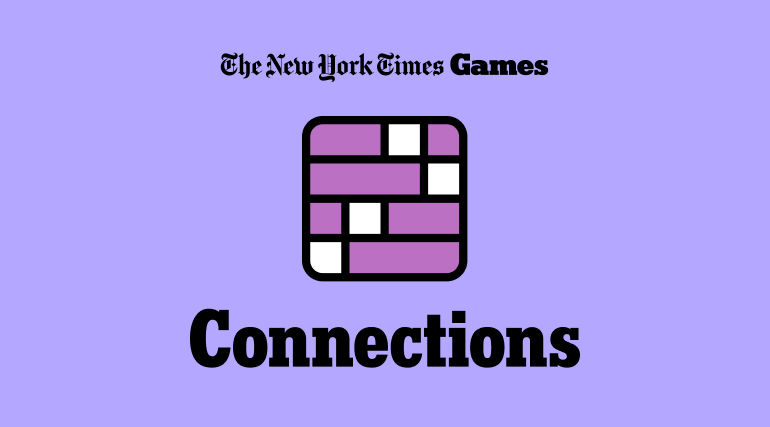Introduction
Keeping students engaged in learning can be a challenge, but incorporating games into the classroom is a proven way to make lessons more interactive and enjoyable. As a game developer, I’ve seen firsthand how well-designed puzzles can boost problem-solving skills and keep players invested.
One game that has recently gained popularity is NYT Connections, a puzzle game that requires players to find groups of four related words among a set of 16. It’s a fantastic way to encourage critical thinking, pattern recognition, and problem-solving—all essential skills for students.
The best part? You don’t have to rely on the New York Times to bring the fun into your classroom. You can create your own Connections game tailored to your students’ learning level and subject matter. Whether you’re teaching vocabulary, historical events, scientific concepts, or even mathematical terms, this game can be adapted to fit any curriculum.
Why Use the NYT Connections Format in the Classroom?
At its core,Connections NYT is a word association game. Students analyze words, recognize patterns, and classify them into distinct categories. As a game developer, I know how valuable this kind of cognitive challenge is—it mirrors the same mechanics that make digital puzzle games so engaging. This type of learning is beneficial because:
- It promotes critical thinking – Students must determine how words relate to one another, sometimes making non-obvious connections.
- It encourages collaboration – The game works well in groups, fostering discussion and teamwork.
- It’s adaptable – You can create categories based on any subject matter, from literature to chemistry to social studies.
- It’s fun! – Students engage more when they enjoy the activity, which can improve retention and participation.
Step-by-Step Guide to Creating Your Own NYT Connections Game
1. Choose Your Words Thoughtfully
Each puzzle requires 16 words, grouped into four distinct categories. Start by selecting a topic related to your lesson. As a game designer, I’ve found that balance is key—categories should be broad enough to make players think but specific enough to be solvable. For example, if you’re teaching American history, your categories might be:
- Founding Fathers (Washington, Jefferson, Hamilton, Franklin)
- U.S. Wars (Revolutionary, Civil, World War I, Vietnam)
- Landmark Documents (Constitution, Bill of Rights, Declaration, Emancipation Proclamation)
- Presidential Landmarks (Mount Rushmore, Lincoln Memorial, White House, Air Force One)
Your goal is to select words that are clearly connected but not immediately obvious as a group.
2. Balance Difficulty Levels
As a game developer, I always think about difficulty scaling. If a puzzle is too easy, players get bored; if it’s too hard, they get frustrated. The same applies here. To make the game more challenging, include words that could fit multiple categories. For instance, if one of your categories is “Types of Rock” (Igneous, Sedimentary, Metamorphic, Basalt), you might also include “Basalt” as a tricky word that could confuse students when placed alongside “Granite” and “Limestone.”
Additionally, try mixing straightforward categories (colors, numbers, animals) with more abstract ones (things that float, items used in music, words with double meanings).
3. Format Your Puzzle
Once you’ve selected your 16 words, arrange them in a 4×4 grid. The presentation should be simple: just list the words without indicating their groupings. If you’re making a digital version, tools like Google Slides, Canva, or even a basic Word document can work well.
For example:
Revolutionary Lincoln Jefferson Air Force One
Civil Bill of Rights Franklin White House
Declaration Hamilton Vietnam Mount Rushmore
Constitution Washington Emancipation World War I
4. Explain the Rules
Before playing, make sure students understand how to play:
- Look at all 16 words.
- Try to find four words that share a common theme.
- Group them together and check with the teacher or game moderator.
- If correct, mark them as a completed category.
- Continue until all four groups are found.
5. Add an Interactive Element
Instead of just listing words, make it a hands-on experience. As a game designer, I always advocate for interactivity—physical or digital. Use index cards so students can physically move words around into groups. If you’re using a digital version, platforms like Kahoot! or Google Forms can help facilitate interactive play.
6. Encourage Discussion
After the puzzle is solved, go over each category with the class. Ask students:
- What made you group these words together?
- Did any words confuse you?
- What strategies helped you solve the puzzle?
By discussing the reasoning behind the groupings, students reinforce their learning and develop better analytical skills.
Customizing the Game for Different Subjects
The versatility of NYT Connections means you can use it for virtually any subject:
- English Language Arts – Literary devices, famous authors, novel themes
- Math – Types of triangles, prime numbers, mathematical symbols
- Science – Elements, body systems, types of energy
- Social Studies – Countries, historical events, government branches
- Foreign Language – Vocabulary categories (food, clothing, verbs, adjectives)
Making It a Regular Classroom Activity
Want to keep the momentum going? Try these variations:
- Weekly Puzzles – Create a new puzzle every Monday as a warm-up activity.
- Student-Created Puzzles – Let students design their own and challenge classmates.
- Team Competitions – Split the class into groups and see who can solve it the fastest.
- Extra Challenge Mode – Introduce a puzzle where one word in each group is a “decoy” to make sorting trickier.
Final Thoughts
As a game developer, I know that a great game isn’t just about rules—it’s about engagement, challenge, and fun. Integrating NYT Connections into your classroom is a fantastic way to boost engagement, promote teamwork, and develop problem-solving skills.
Best of all, it’s an easy, no-cost activity that can be adapted for any grade level or subject. So, why not give it a try? Design a puzzle, test it with your students, and watch as they sharpen their thinking skills—all while having fun!



